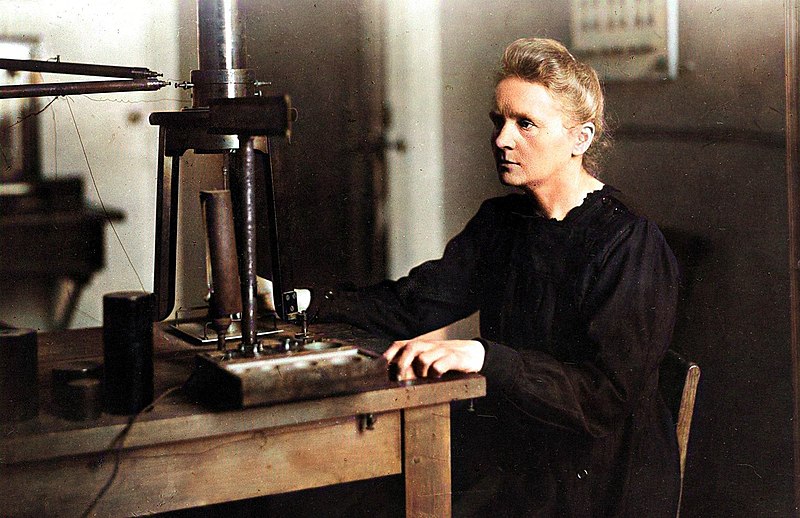
International Ada Lovelace Day was established to highlight the success of women within the STEM subjects - Science, Technology, Engineering and Maths.
Here is a list of some famous female STEM pioneers and their achievements
Ada Lovelace is famous for being the first person to write and publish a computer program in 1843.
What? Wait a minute... Computers didn't exist in 1843!
This is true. However, Charles Babbage had designed a prototype calculating machine called an Analytical Engine in the 1830s.
Upon studying the designs of Babbage's machine, Ada began to plan for how it could be operated - or programmed, as we would refer to it today.
Ada Lovelace's work was the inspiration for Alan Turing 100 years later
In 1983 a new computer programming language was named Ada in respect of her early contribution to computer science.
Rosalind Franklin is famous for her discovery of the double-helix structure of DNA
Her first research work was focused around the physical chemistry of carbon and coal as part of the war-effort of the 1940s.
Rosalind obtained a PhD in chemistry from Cambridge University in 1945
Using techniques she was familiar with from her work with carbon structures, Rosalind set about studying the physical structure and chemistry of DNA.
Further research into viruses led to the discovery that RNA was a single-strand helix structure.
Impressively, these achievements were all reached during a relatively short career, as she died at the age of 38 from cancer.
The ExoMars Rover - whose future mission is to seek out signs of life on Mars - has been named the Rosalind Franklin.
Katherine Johnson is now famed for her role as the lead mathematician for many of NASA's space missions during the Space-race of the 1950s and 60s.
Why say 'is now famed for'?
Katherine Johnson was not just a female in a very male dominated industry, but she was also of african-american descent. This meant that at the time of her major successes she was kept away from the limelight by NASA due to the tensions surrounding the involvement of a black in a high-level classified role at a time when segregation was still practised across the US.
She was one of the first african-americans to graduate from her college, and also one of the first to obtain a PhD in Mathematics in 1937 (26 years before Martin Luthor King's 'I have a dream' speech).
After providing some of the maths for a series of lectures given by aircraft/flight engineers, she was recruited along with the rest of the group by NACA (renamed NASA a year later).
Katherine Johnson was responsible for the trajectory analysis of America's first human spaceflight. This work led her to be the first woman in the Flight Research Division to be named as an author on a paper.
She continued to offer the complex mathematics needed for NASA to complete a number of successful missions.
One astronaut, John Glenn, refused to undergo a mission in 1962 unless the mathematical equations of the new computer system were confirmed and checked by Katherine Johnson herself.
She was finally, publically recognised, for her astounding achievements by President Barack Obama awarding her America's greatest civilian honour (the Presidential Medal of Freedom).
Katherine Johnson died in February 2020 at the age of 101.

Marie Curie is most famous for her research into radioactive elements. However, she also made break-throughs in medicine.
She and her husband, Pierre Curie, worked together in the School of Physics and Chemistry in Paris for several years. Between them, they discovered two new elements - Polonium and Radium
Their work earned them a Nobel Prize in Physics (shared with another seperate researcher in radioactivity - Henri Becquerel) in 1903.
After her husband's death, she continued their research into radioactivity.
Marie Curie earned herself another Nobel Prize, this time in chemistry, for her continued research in measuring levels of radiation.
During World War I, Marie Curie campaigned on behalf of the Red Cross to raise funds for mobile X-Ray units that could be used to diagnose injuries near the battlefront. These machines became known as 'Petits Curies'. She, and her daughter, operated one of these machines at a casualty station near the front lines to treat wounded soldiers.
Her name has been adopted by a major charity in the UK that help offer care and support to those with terminal illnesses. These often involve the use of radiation therapies using isotopes discovered by Marie and her husband.
Mayim Bialik is a famous US actress, her most famous role is probably that of Dr. Amy Farrah-Fowler in the hit TV show The Big Bang Theory.
This is supposed to be about scientists not actresses...
Mayim has proven these two interests are not incompatible, she is an actress, but she also has a PhD in Neuroscience.
Having suffered from the stereotyping of women within science during her school years, she now helps encourage more young women into STEM to help eliminate the gender stereotypes.
"Marine biology, working with animals, working in the environment - all those things are science. You like engineering? You want to do coding? Knock yourself out. There are many STEM careers that involve a lot of variety and a lot of creativity. And that's what I think we need to try and communicate to girls as young as possible."
Mayim Bialik quote from an interview in National Geographic